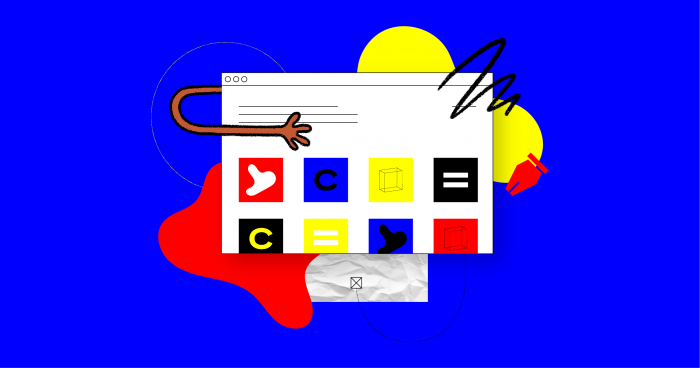Back when Pentagram partner Eddie Opara scored his first major client project, he immediately realized there was a problem: “I didn’t know what a contract was,” he recounted. Tasked with developing a brand identity for a new luxury building, he first had to figure out how, exactly, to put together a statement of work that proved he could take on the job (while also preventing the scope of work from getting out of hand).
A frantic call to his brother and a page of scribbled-down advice later, Opara got the resources together in a pinch, securing a serious payday and portfolio boost. Crisis averted, but it was a near-misstep that could’ve derailed the entire project before any of the real design work had even begun.
It’s not just a lack of business acumen that can hold things up, though. Even industry veterans can make mistakes that leave a client second-guessing that contract. Passing the proverbial vibe check, after all, is the first step to a productive client-designer partnership.
So how can you keep potential clients from getting cold feet? We checked in with designers, project managers, and hiring execs to learn about the oversights that could make or break a deal.
Don’t be afraid to talk the talk
Before pen can hit paper, you need to walk the tightrope of defining the scope of work. That means taking stock of a client’s vision and lining up your skillset with what’s often a constantly-changing end goal.
In other words, this isn’t the time to be overly humble. Getting passed over by a client is often due to an absence of confidence, not competence.
One designer recounted learning this lesson the hard way. “I ended up putting the ball in their court,” they described. “I froze and told them I’d understand if it made more sense to go with an illustrative design specialist… In hindsight, I was more than capable of delivering.”
The burden of being the hype team doesn’t fall solely on you, however. Use testimonials from past clients to your advantage, and don’t shy away from a shining LinkedIn endorsement to provide extra social proof.
At the end of the day, a client wants to know that hiring you will make their life easier. Don’t keep them wondering if you can really do it (but of course, be realistic, and don’t promise what you can’t deliver).
Join the team (even if you’re not “on” the team)
Freelancing doesn’t have to be a cold, lonely existence. Nor does it require awkward re-introductions—yep, that plant in my Zoom background is still kicking, thanks—with every check-in.
As a designer stepping into a new project, you get the benefit of a clean slate, but even if your work speaks for itself, reminding them that collaboration is baked into your process isn’t quite as straightforward. So where should you begin?
The first step is to make it crystal clear that you want the project to succeed just as much as they do. Whether it’s re-launching a website or re-working a brand’s identity with a motion logo, projects rarely come to a clean finish the moment you hit submit. That means you need to get invested in both the final product and the process. So how can you show that you’re truly in it for the long haul? Freelancers might want to take a cue from a new trend among creative agencies: accepting equity as payment. It’s a move that helps establish a long-term partnership from the outset and provides an incentive that’s potentially much bigger than a one-time project fee.
At best, the client-designer relationship is one that benefits each party—even when success doesn’t always follow a linear path. You don’t have to be a mind reader to integrate into a new workflow, but you should be willing to adapt within reason.
One more thing: most designers know that the phrase “this is a great opportunity for exposure” is a bad omen. But it’s not a one-way street; clients don’t want to feel like they’re just another paycheck or entry to the portfolio.
Don’t expect a client to hold your hand
Although the creative and corporate worlds don’t always overlap, designers still deal with their fair share of “synergy sync” calendar invites and “circling back” Slack messages. Nobody likes being inundated with unnecessary notifications, and going totally silent is a recipe for disaster. So where does the balance between autonomy and assurance lie?
“The biggest part of your job is offsetting a client’s workload—and that includes saving them the trouble of spelling everything out,” a motion graphics specialist outlined.
“My advice is to avoid walking through every last detail,” they continued. “Instead, use that time to ask clarifying questions and provide status updates while clearing up murky expectations that may slow things down later.”
If a client hands off the baton and a set of brand guidelines, it just might be on purpose. As an agency executive told me, “There’s good, there’s cheap, and there’s easy to work with. If you don’t have at least two of the three, nobody will want to contract with you.”
Rest assured, strong communication isn’t rocket science. Maintain professional boundaries (frantic midnight messages aren’t always the best way to showcase commitment to the project), gather as much information as you can, and keep the dialogue productive.
The customer isn’t always right. Neither are you
What’s more expensive than a few lost hours of work? An ego that’s too big to course correct.
When embarking on a new project, it’s easy to get carried away and lay out a grandiose vision—but sometimes, this excitement translates to stubbornness or an inability to follow the client’s guidelines.
As one project manager said, “A good indicator of a designer’s effectiveness comes down to a simple question: Do they understand the client’s appetite for risk?” Pushing a brand forward while ensuring clients are happy is a challenge unto itself; when in doubt, don’t stop listening.
Then there’s the danger of biting off more than you can chew. Another designer explained how “overpromising early on and committing to an idea that’s right for you—not them—backfires quickly. Sometimes, it’s worth taking a step back to remember what you’re really being asked to do.”
Even the coolest clients still have deadlines to hit. Overrating your preferences can put things behind schedule and, in turn, cause budget-induced headaches for everyone. Polling on project management from UK-based consultancy Wellingtone showed that only 43% of companies report regularly finishing projects within the agreed budget.
Don’t be the designer whose pride holds things up or adds huge surprises to the receipt. You’ll thank yourself later.



